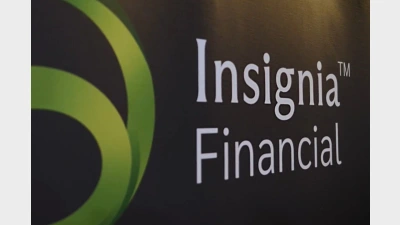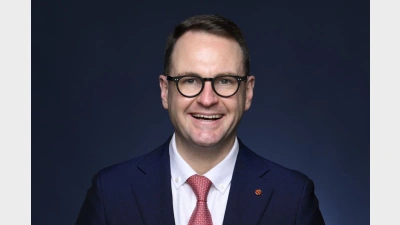A cautionary tale
Investors should be selective when diversifying into alternative investments because of a dearth of evidence showing reliable returns, and the potential for high fees, according to the latest asset allocation report from Standard & Poor’s(S&P).
It suggested that individuals and institutions could be better served by diversifying into assets such as distressed debt, with more opportunities expected in this space over the next 12 months.
According to S&P director of investment consulting Simon Ibbetson, we are currently seeing a rationalisation of companies on offer, with investment managers’ divestment of under-performing company stocks creating opportunities.
“As interest rates creep up and restructuring happens, there is going to be more opportunities for them. It is one of those areas we will be looking at quite closely,” he said.
Three key reasons he expected this area to be of interest to fixed-income and hedge fund investment managers are current depressed economic conditions, the asset’s low correlation with traditional bonds and equities and its high risk premium. These factors mean many managers of distressed portfolios will be able to take controlling stakes in target companies in order to engineer favourable outcomes.
Referring to distressed debt, the report said: “Its addition to a portfolio should be seen as a proactive step rather than a dangerous gambit.”
S&P reported that August brought a strong reduction in the market’s level of expected risk, resulting in positive returns across most asset classes, particularly growth assets. It said that local and global market returns were roughly equal, with listed property outperforming equities in both.
This follows the upward trend in listed property trust (LPT) returns over the last three years. Relative to the five-year average return of Australian equities, which delivered 14.8 per cent, LPTs have yielded 17.3 per cent over the last five years.
While acknowledging the part played by LPTs in satisfying investors’ appetites for constant yields, Ibbetson expressed concern that some managers had become over-reliant on the asset class, viewing it as a de facto fixed interest product.
“Unfortunately, many don’t understand the risk of this because of economic, deflation and management risk — it’s not fixed interest,” he said.
The report also talks up the benefits of integrating hedge funds into portfolios, with the report stating “we continue to recommend hedge fund-of-funds as the preferred ‘alternative’ investment vehicle and source of absolute returns …”. It said that this was due in part to the investment flexibility and better investment terms of hedge funds, along with their exposure to areas such as distressed debt.
Speaking about the multi-manager multi-asset class fund-of-funds, Ibbetson said that volatility is now relatively low, sitting between 3 and 4 per cent, and lower in some cases.
While their returns were not what was predicted five years ago, they are still generating 7 to 10 per cent. “For that level of volatility and that scope of return, we’re actually quite comfortable having them in the portfolio, so long as you have [it] adequately diversified across at least 40 to 50 managers,” he said.
The impact of the United States Federal Reserve Bank’s monetary policy was also addressed. Its recent move to reduce interest rates, the first cut after 17 consecutive rises, fuelled speculation that US rates had peaked.
“The interest pick-up is quite small now, so [US investors] are less inclined to put money with Australian investors; demand for those from overseas investors is much lower than it was a couple of years ago,” Ibbetson said.
Partly in response to this, S& P’s is shifting towards a global rather than domestic focus. “For institutional clients, for example, we have a growth allocation that is probably 60 to 40 per cent in favour of international equities over domestic equities,” Ibbetson said. He also said it is gradually moving its retail investors toward a more institutional-type asset allocation.
The end to the latest run of rate increases in the US drove gains across most global sectors, with LPTs the biggest domestic beneficiaries of this improved sentiment, enjoying gains of 4 per cent or more across most Western markets, including Australia.
The loser from the US shift on interest rates was Government bonds, with yields falling across the markets of most developed nations. Australian bond markets followed this lead, on the back of weaker US economic data and a subsequent reduction in the prospect of future rate rises.
“For bonds in retail [portfolios], we’re still moving to an underweight position [in domestic] … we still have basically a large allocation to Australian bonds, something like 12 per cent,” he said.
The report said that while private equity can add value, access to the best opportunities was in most cases dominated by an elite group of the largest investment managers, to the detriment of individual investors.
According to Ibbetson: “Private equity offerings do not always seem to live up to their claims as a diversifier and return enhancer.
“Private equity can add value, but experience shows us that only a few of the best, largest and, hence, most exclusive managers tend to prevail.”
Recommended for you
Future Group is set to take on nearly $1 billion in funds under management (FUM) and welcome more than 100,000 new members following two significant successor fund transfers.
Insignia’s Master Trust business suffered a 1.9 per cent dip in FUA in the third quarter, amid total net outflows of $1.8 billion.
While the Liberal senator has accused super funds of locking everyday Australians out of the housing market, industry advocates say the Coalition’s policy would only push home ownership further out of reach.
Australia’s largest superannuation fund has confirmed all members who had funds stolen during the recent cyber fraud crime have been reimbursed.












